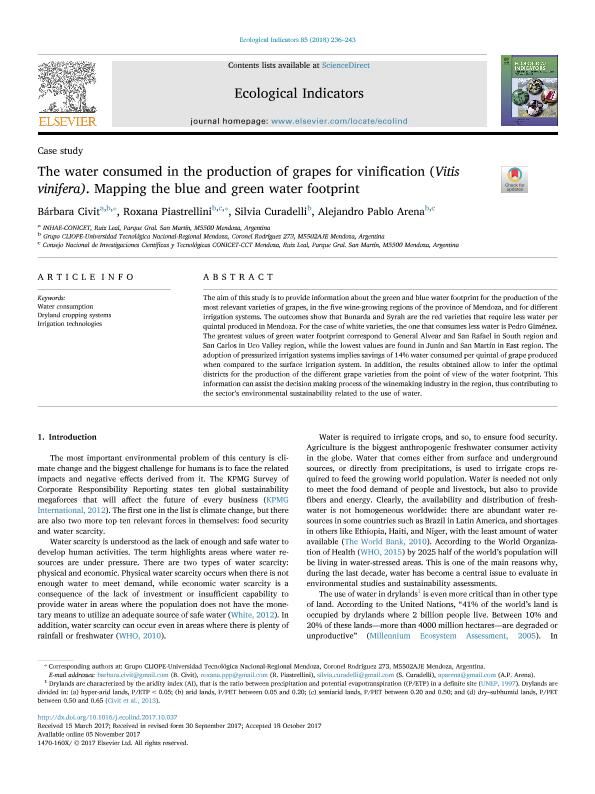Artículo
The water consumed in the production of grapes for vinification ( Vitis vinifera) . Mapping the blue and green water footprint
Fecha de publicación:
02/2018
Editorial:
Elsevier Science
Revista:
Ecological Indicators
ISSN:
1470-160X
Idioma:
Inglés
Tipo de recurso:
Artículo publicado
Clasificación temática:
Resumen
The aim of this study is to provide information about the green and blue water footprint for the production of the most relevant varieties of grapes, in the five wine-growing regions of the province of Mendoza, and for differentirrigation systems. The outcomes show that Bonarda and Syrah are the red varieties that require less water per quintal produced in Mendoza. For the case of white varieties, the one that consumes less water is Pedro Giménez. The greatest values of green water footprint correspond to General Alvear and San Rafael in South region and San Carlos in Uco Valley region, while the lowest values are found in Junín and San Martín in East region. The adoption of pressurized irrigation systems implies savings of 14% water consumed per quintal of grape produced when compared to the surface irrigation system. In addition, the results obtained allow to infer the optimal districts for the production of the different grape varieties from the point of view of the water footprint. This information can assist the decision making process of the winemaking industry in the region, thus contributing to the sector?s environmental sustainability related to the use of water.
Palabras clave:
Water Consumption
,
Drylan Cropping System
,
Irrigation Technologies
Archivos asociados
Licencia
Identificadores
Colecciones
Articulos(INAHE)
Articulos de INSTITUTO DE AMBIENTE, HABITAT Y ENERGIA
Articulos de INSTITUTO DE AMBIENTE, HABITAT Y ENERGIA
Citación
Civit, Bárbara María; Piastrellini, Roxana; Curadelli, Silvia; Arena, Alejandro Pablo; The water consumed in the production of grapes for vinification ( Vitis vinifera) . Mapping the blue and green water footprint; Elsevier Science; Ecological Indicators; 85; 2-2018; 236-243
Compartir
Altmétricas




